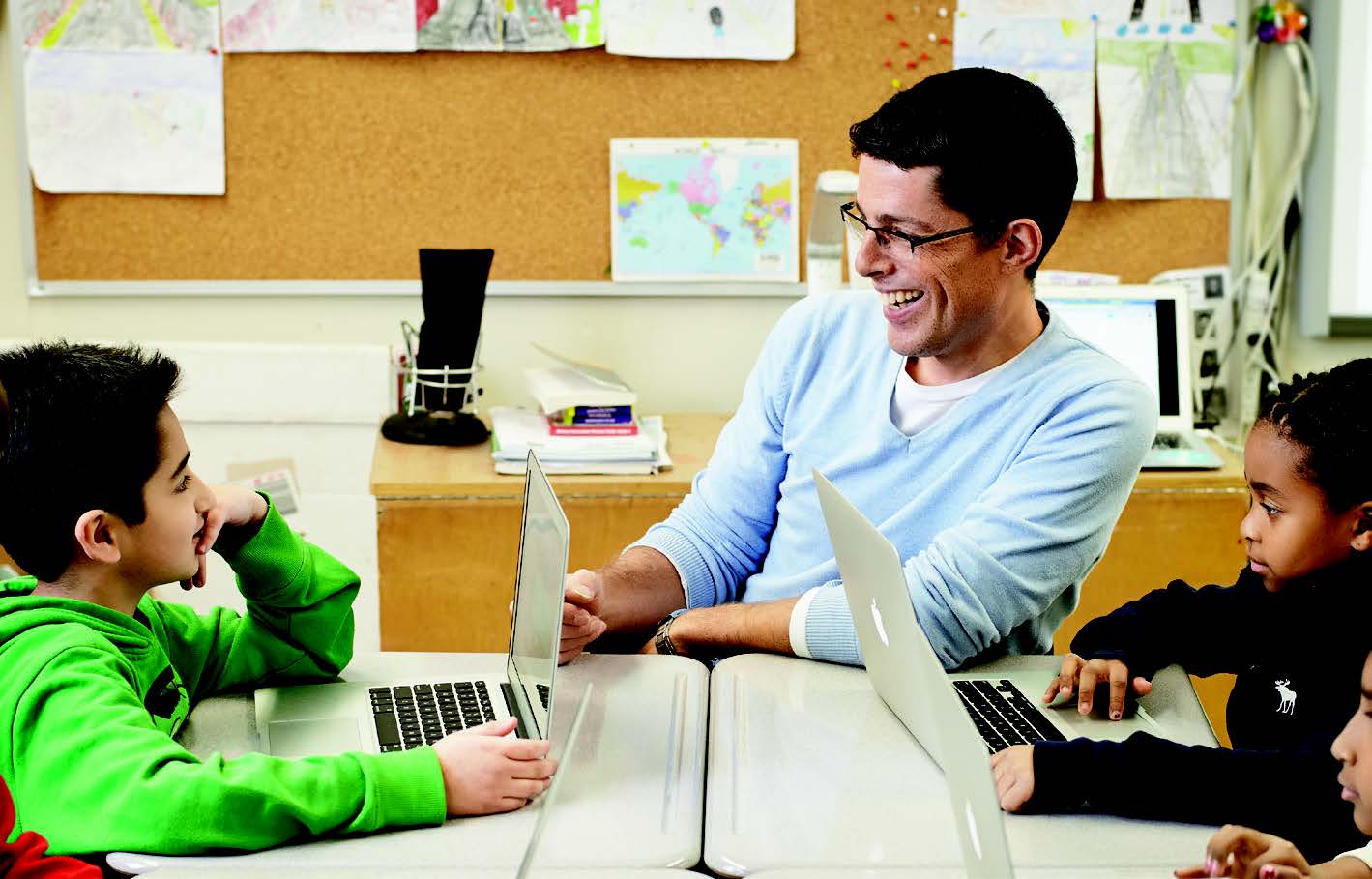Share this page
The high-tech adventures of igneous, sedimentary and metamorphic rocks in Burlington.
By Stefan Dubowski
Photo: Matthew Liteplo

Challenge: Teach Grade 4 students the rock cycle in a fun, engaging way.
Solution: Have students create rock cycle adventures using free online software.
Lessons Learned: The rock cycle can be confusing for students: under certain conditions, igneous rock transforms into sedimentary rock. Under different conditions, igneous becomes metamorphic rock. Sedimentary rock can turn into igneous rock once it goes through a metamorphic stage. What’s the best way to teach students about the processes involved?
Shaun Else, OCT, Grade 4 teacher at John William Boich PS in Burlington, finds narrative helps make the rock cycle more memorable. Add technology to the mix, and you have a method of fostering not only geographic knowledge, but also teamwork and critical thinking.
Else directs students to create choose-your-own-adventure rock cycle stories. Working in teams of two or three, they use classroom laptops, desktop PCs in the computer lab, or their own home computers to access free online applications including Google Draw to plan their stories, and Google Presentations to illustrate adventures with words, pictures and videos.
Students save their work on Halton Cloud, the school board’s online data repository. (Halton Cloud is also known as Google Apps for Education, another free Google offering.) Else reviews the work and makes comments right in the digital files. The students evaluate each other’s work online as well, offering comments for improvements.
Observations: Working in teams on the Web helps students learn to collaborate, even when they aren’t in the same location. “They can operate separately but still see each other’s work,” Else says.
Students learn the rock cycle and they hone their narrative chops. “The assignment hits language and other parts of the curriculum, because they’re building a story.”
Else finds the comments capabilities in the software particularly useful. Whereas students might ignore or forget suggestions he makes in person, they are less likely to be so cavalier about comments he makes in the stories themselves. “If I comment online…the kids see the comment hanging there, bugging them — and they tend to take it more seriously.”
The students also learn to provide constructive criticism. “We discuss what a valuable comment is,” Else says. “Simply stating, ‘Good job!’ does nothing to improve their peers’ work.”
With technology at the centre of the assignment, students gain confidence using software to create and communicate. For his part, Else believes it’s important for teachers to step back and let children figure things out for themselves — which is just what they get to do in the rock cycle assignment. What’s the best arrangement for images on a page? Which font helps illustrate the story? What’s the best way to describe each step in the cycle?
“I’m not the ‘sage on the stage’ for this,” Else says, adding that for his students, self-discovery is key. “I’m learning that I don’t have to be there all the time.”
Helpful Hint: Grading teamwork is tricky. How do you really know what each student contributed? Technology helps: when children use software to create their work and the Web to submit, teachers can use the “revision history” function in the software to see who did what.
You’ll need:
Steps: